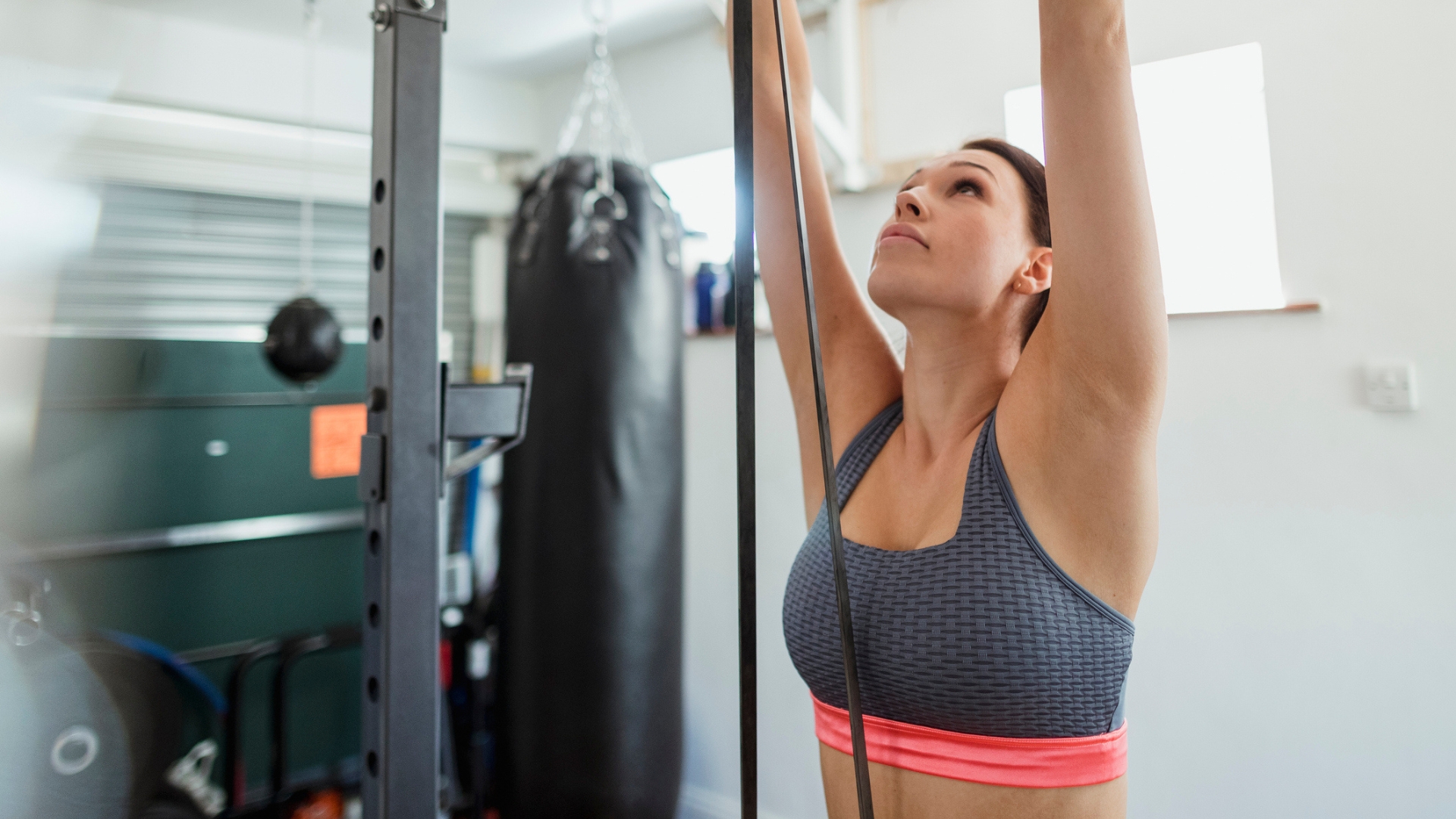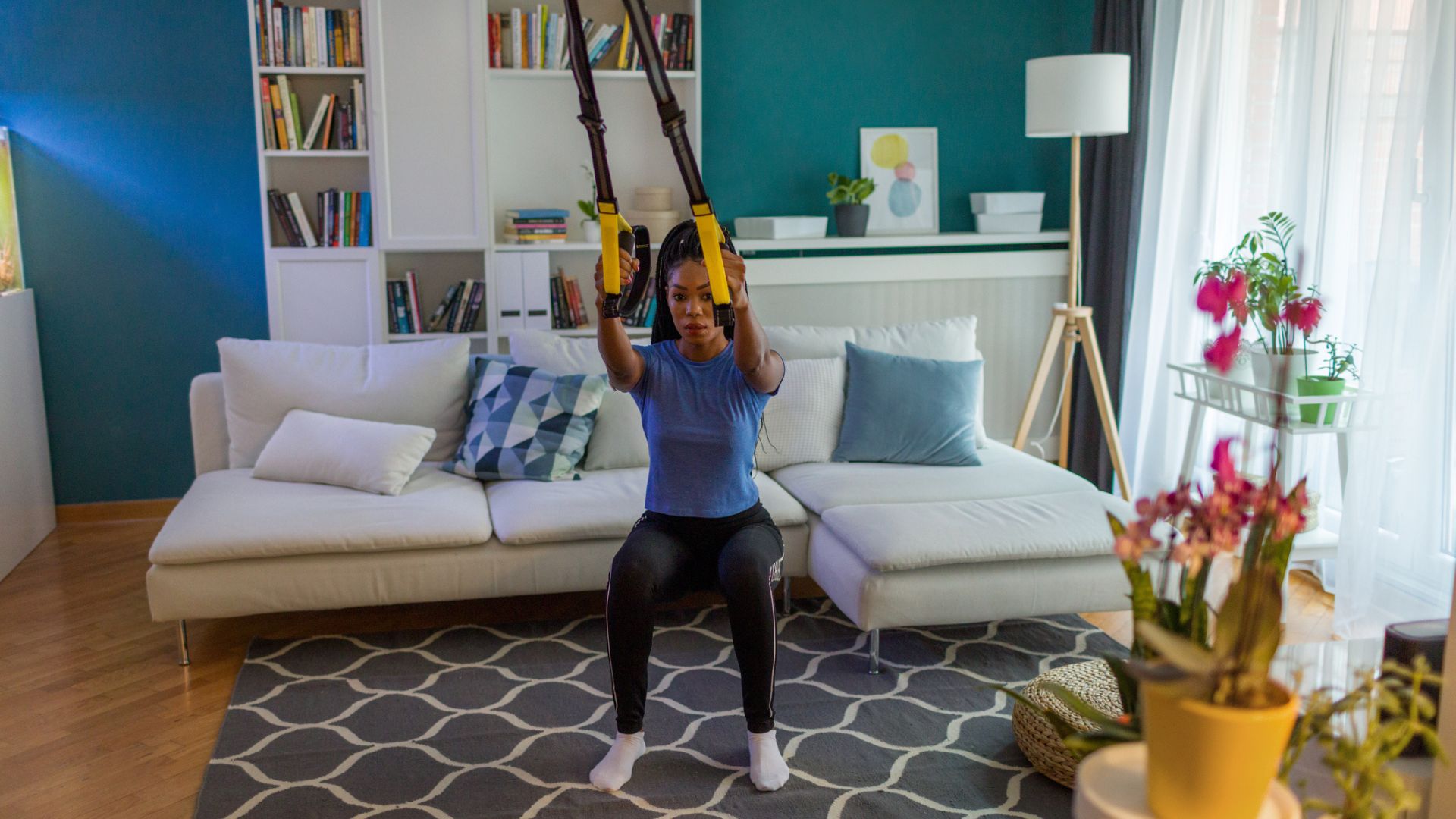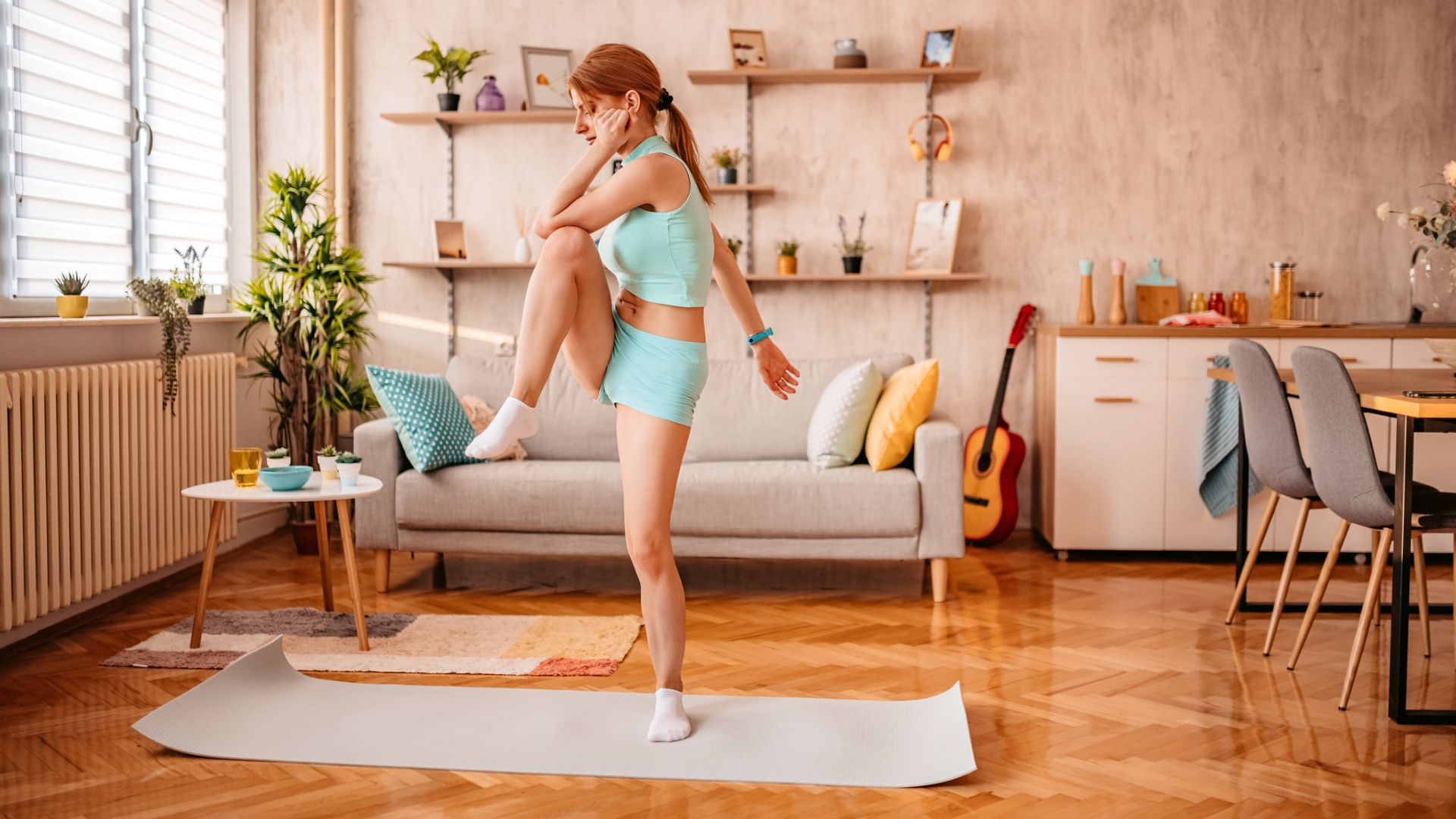Can’t do a pull-up? A personal trainer recommends these four exercises to build back strength
Prepare for your first pull-up by perfecting these moves


Achieving a pull-up is a common fitness goal for many of my clients. While it seems like a basic, functional move, pull-ups are actually very challenging. If your first attempts didn’t get you far, don’t worry—you’re not alone, and these tips might help.
Back strength is crucial to mastering pull-ups, so you’ll want to strengthen several target muscles: your latissimus dorsi, which runs from your rib cage to hips, and your middle and lower trapezius, along with the rhomboids, which are all located between the shoulder blades.
To achieve a perfect pull-up, focus on the below exercises to build the necessary strength. You’ll need a pull-up bar, a long resistance band, a table (or other suitable sturdy surface) and a dumbbell.
Dead hang
Sets: 2-3 Reps: 10-30sec
- Step onto an elevated surface and grab a pull-up bar with an overhand grip (palms facing away from you). Engage your core and keep a neutral spine.
- Roll your shoulders back and squeeze your shoulder blades together.
- Step off of the elevated surface and hang from the bar.
- Hold for the desired amount of time, or until you reach muscle fatigue.
Trainer tip: Keep your back and core engaged at all times. Start with 10 seconds and gradually increase your time as you build strength.
Assisted pull-up
Sets: 2-3 Reps: 8-10
- Secure a resistance band around the pull-up bar
- Step onto an elevated surface and grab the bar with an overhand grip (palms facing away).
- Step one foot at a time into the resistance band. Engage your core and keep a neutral spine.
- Roll your shoulders back and squeeze your shoulder blades together.
- Pull yourself up until your chin passes the bar, then lower with control.
- Complete the repetitions or until you reach muscle fatigue.
Trainer tip: Resistance bands come in different thicknesses (strengths). Start with a thicker band and gradually work towards a lighter band as you get stronger.
Get the Fit&Well Newsletter
Start your week with achievable workout ideas, health tips and wellbeing advice in your inbox.
You can also use an assisted pull-up machine, often available in gyms. These work by counterbalancing your own bodyweight. Begin with a heavier weight and decrease as you improve.
Inverted row
Sets: 2-3 Reps: 10-12
- Position yourself underneath a table or other sturdy surface, aligning your hips with the edge.
- Grab the edge with an overhand grip and lengthen your legs, walking them out so that your body forms a straight line.
- Roll your shoulders back and squeeze your shoulder blades together.
- Pull yourself up until your chest touches the edge of the table.
- Lower with control.
- Complete the repetitions or until you reach muscle fatigue.
Trainer tip: Keep your hips from dropping by engaging your glutes and hamstrings. You can also bend your knees and place your feet on the floor for support.
Alternatively, you can use a Smith machine or a barbell and squat rack. Set the bar at hip height and perform the movement as described.
Dumbbell row
Sets: 2-3 Reps: 10-12
- Select a pair of moderately heavy dumbbells and assume a stance with feet hip-width apart.
- Hinge at the hips and lean your torso forward. Engage your core and keep a neutral spine.
- Squeeze your shoulder blades and lift the dumbbells toward your hips.
- Pause briefly at the top and lower with control.
Trainer tip: Keep your back engaged and avoid rounding the spine during the movement.
If you have a weight bench or another elevated surface, you can use it for additional support. Rest the arm and knee of your non-working side on the bench, keeping your core engaged and spine neutral.

Jennifer Rizzuto is a freelance fitness journalist based in New York, NY. She’s been a NASM-certified personal trainer, corrective exercise specialist, and performance enhancement specialist for over a decade. She holds additional certifications in nutrition coaching from Precision Nutrition, and pre/post-natal exercise from the American Council on Exercise. As the daughter of a collegiate football coach who was never any good at sports, she understands how intimidating it can be to start an exercise regimen. That’s why she’s committed to making fitness accessible to everyone—no matter their experience level.
-
 If you’re exercising on a budget, this is the one piece of at-home equipment I’d recommend as a personal trainer
If you’re exercising on a budget, this is the one piece of at-home equipment I’d recommend as a personal trainerSuspension trainers are inexpensive and incredibly versatile
By Jennifer Rizzuto
-
 Five standing abs exercises this trainer actually uses to improve core strength
Five standing abs exercises this trainer actually uses to improve core strengthTrain your abs without hitting the floor
By Lou Mudge


